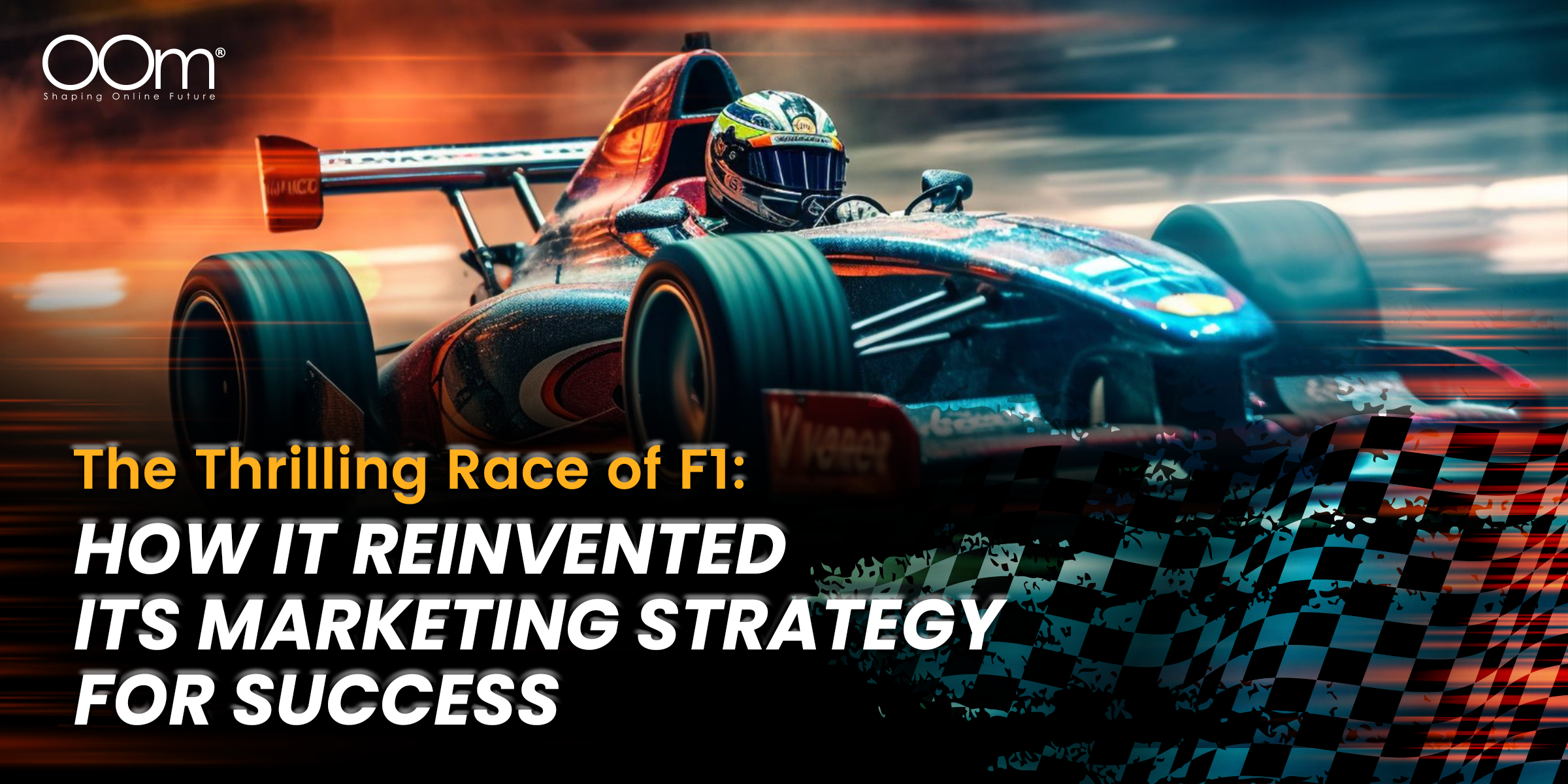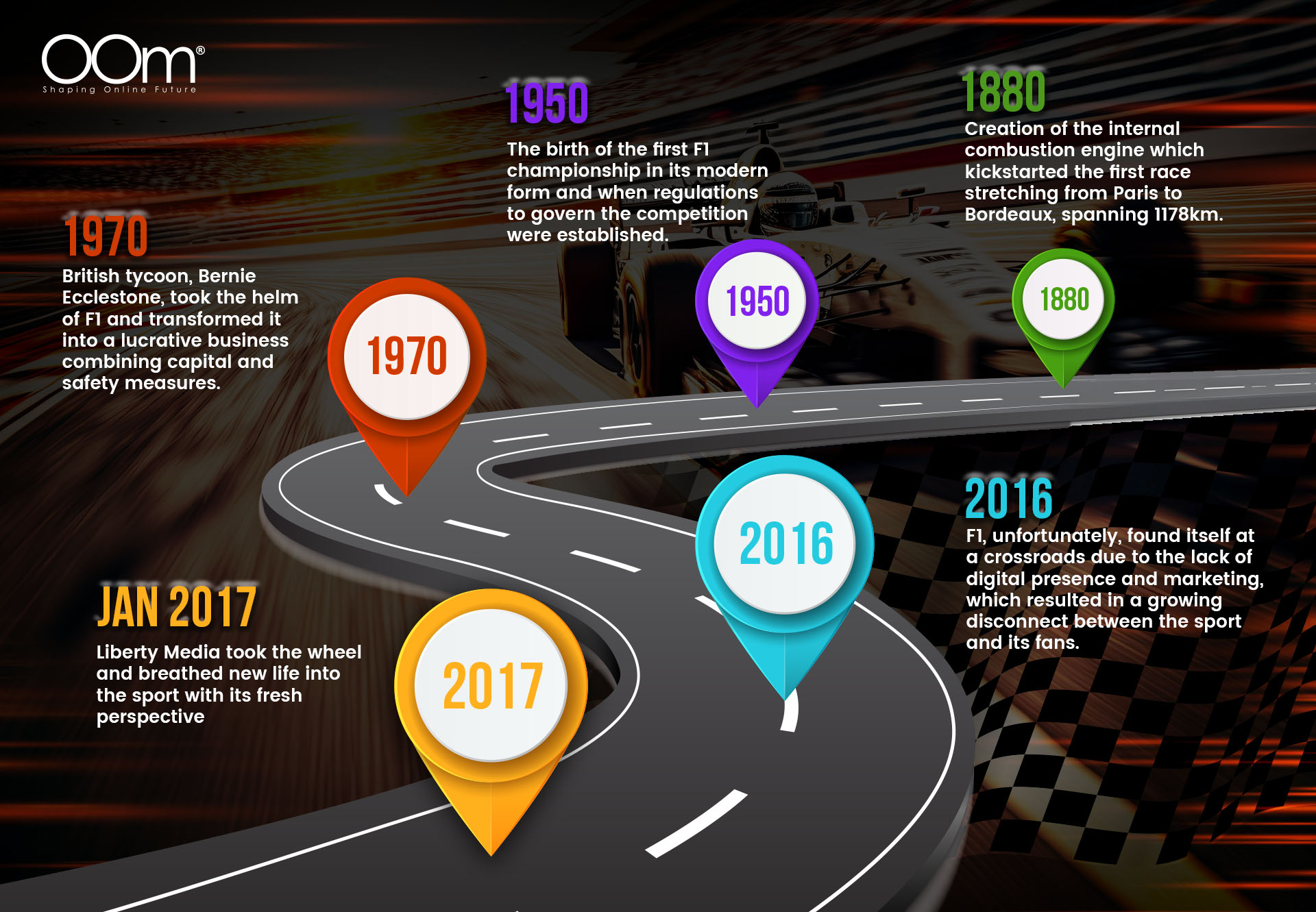
Formula 1 (F1), more than just a high-octane sport, is a thriving business model that has undergone a remarkable transformation in its marketing strategy. But to understand this journey, we must first delve into its roots. In this article, we will explore how F1 evolved from a struggling entity to a global sensation, all thanks to its revamped marketing strategy.
Keep reading to find out more.
A Legacy of Speed and Innovation

The history of F1 is a story of speed and a relentless pursuit of excellence. In 1880, a significant milestone in the world of motorsport occurred with the creation of the internal combustion engine. It marked the dawn of an era where humans would push the limits of speed and engineering. The first true test of these new machines took place on the winding roads from Paris to Bordeaux, covering an astonishing 1178 km, both going and returning.
However, F1, in its modern form, emerged in 1950 when a visionary decision was made to create regulations that would govern this unique competition, encompassing drivers, races, and single-seaters. This marked the birth of the first F1 championship, forever changing the landscape of motorsport.
And the incredible ascent of F1 to global prominence can be attributed to the indomitable spirit of one man: Bernie Ecclestone. In the 1970s, the British business tycoon took the helm of F1, transforming it into a stable and lucrative business operation. Ecclestone’s influence was so profound that he was often referred to as the ‘F1 Supremo.’
Under Ecclestone’s leadership, F1 saw an infusion of both capital and safety measures. Today, F1 cars can reach mind-boggling speeds of up to 370km per hour and execute pit stops in under two seconds.
F1’s Crossroads: The Image and Reach Challenge
As F1 hurtled into the year 2016, it found itself at a crossroads. The once-shining spectacle of the sport was showing signs of wear and tear and its allure was slowly fading. What had once been the pinnacle of motorsport now faced a daunting challenge — an image and reach problem.
First and foremost, it grappled with a growing disconnect between the sport and its fans. The days of an intimate, direct relationship between enthusiasts and the racing world were slipping away. Instead, third-party digital services had swooped in, rapidly diverting fan attention. This detachment threatened to erode the very foundation of F1’s fan base, which had been the livelihood of the sport for decades.
Furthermore, even though F1 had excelled in securing media rights and promoters, they had largely ignored critical aspects such as digital presence and marketing.
The challenge was clear: F1 needed a transformation, not just in how it raced on the track but in how it engaged with its global audience.
A New, Innovative Media Agency Takes the Wheel

The turning point for F1 came when Liberty Media, an innovative media agency took over. Their fresh perspective breathed new life into the sport. They recognised that Formula 1 was more than just a race; it was an entertainment spectacle that needed to engage audiences beyond the racetrack.
Instead of focusing solely on the race, the team at Liberty Media highlighted the drama, the competition, and the human stories behind the drivers and teams. This approach resonated with audiences, especially the younger demographic, and began attracting a more diverse fanbase.
How Liberty Media Revolutionised F1
When Liberty Media took the reins of F1, they did not just see a sport; they saw a treasure trove of data waiting to be unlocked. F1 had long held a large amount of data, primarily utilised by the teams to build better cars and devise race strategies. However, under Liberty Media’s stewardship, this wealth of information was harnessed to offer fans a deeper understanding of the races. The result was a transformation in content delivery, catering to the desires of hardcore fans who craved more than just the spectacle of speed.
Additionally, to bridge the gap between casual viewers and die-hard fans, F1 started initiating various forms of digital outreach. This journey began with something as simple yet effective as YouTube videos that delved into the personalities of the drivers, offering glimpses behind the scenes.
F1 also introduced a dynamic mix of F1 podcasts, user-friendly apps, and the F1TV that allowed fans to access F1 content wherever, whenever, and however they pleased.
View this post on Instagram
View this post on Instagram
Perhaps one of the most significant shifts was the utilisation of social media accounts for drivers and teams. Previously, they were constrained in their interactions with fans. Now, fans could see another side of their racing heroes, viewing them not just as unreachable idols in fast cars but as real people with real stories to tell.
Last but not least, the Netflix series “F1: Drive to Survive” focused on drama, rivalries, and behind-the-scenes narratives as much as the on-track action. In a remarkably short time, it attracted a fresh wave of fervent fans.
The Vital Role of Video and Multimedia
F1’s incredible transformation from a struggling sport to a global phenomenon serves as a testament to the power of innovation in marketing. As F1 has shown, it is not just about the race; it is about the journey, the stories, and the experiences shared with fans worldwide.
It emphasises that even industry giants must adapt to changing times and invest in content creation, especially video and multimedia, to engage their audience effectively. Incorporating these strategies into your own marketing efforts can help your business thrive in an ever-evolving digital landscape.
To stay up-to-date with the latest industry trending topics, follow OOm’s social media channels: Facebook, Instagram, LinkedIn, YouTube, and TikTok.





